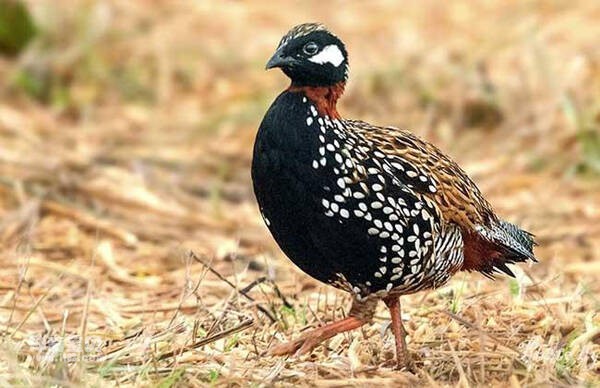Francolinus francolinus
IUCN
LCBasic Information
Scientific classification
- name:Francolinus francolinus
- Scientific Name:Francolinus francolinus,Black Francolin
- Outline:Landfowl
- Family:Chickeniformes Pheasants Partridges
Vital signs
- length:22-34cm
- Weight:250-380g
- lifetime:No textual research information is available
Feature
Distribution and Habitat
It is found in southern Eurasia, extending from Cyprus and eastern Turkey to Pakistan and eastern India.
Black partridge likes warm and dry environment, avoid humidity, hot and cold, and lives in low-lying areas and mountains below 1600 meters above sea level.
Appearance
The male's plumage is a colorful pattern of black, brown, chestnut and white.
Details
Black partridges are known as Francolinus francolinus and Black Francolin. They live in groups and often forage in groups of 10 to 14. Both males and females can produce a high-pitched call that can travel a long distance. It is an omnivorous bird, mainly feeding on wild plant seeds, grain seeds, berries of young plants, buds, moss, lichens and insects (such as fried manganese, ants).

In the wild, the black partridge is mostly ground active and can fly (from 2 weeks of age, the ability to fly), fast and powerful, but not lasting. Love to perch high, showing obvious wildness. Caged active, like to move frequently, good at drilling the gap to escape. If the black partridge is released from the cage, it flies and calls, and is very active, calling from morning to night. If a tame partridge breaks its cage and escapes, most of it can fly back without being frightened. If a black partridge finds light in a dark environment, it will fly to the light.
Black partridge is an early adult bird, and after the fur dries, it will walk, feed, drink and fight. Black partridges are aggressive, especially during mating season, and often fight among males for mates. Black partridges usually peck at each other's feathers, anuses, and blood, and once a partridge is injured and bleeding. Other partridges flock to peck at it. When raising partridges artificially, it is necessary to observe them frequently to prevent fighting casualties. If any injuries are found, they should be isolated and treated immediately. Artificial feeding, raised to 20 weeks of age, male and female should be raised separately, according to the proportion of a male with a female before opening, divided into small groups of cage.

Wild black partridges breed from April to May, and build nests to lay eggs. The nest site is mostly in the stone pile of grass and bushes, or under the stone slab on the stone mountain or in the iron artemia, and some nests are built at the base of cliffs, mountain streams and canyons. The nest is shaped like a pit filled with hay. The eggs are smooth brown and white, with dark red spots varying in size. The eggs weigh 19 ~ 20 grams, the long diameter is 38.6 ~ 40.5 mm, and the short diameter is 30.3 ~ 31 mm. Under domestic conditions, both male and female partridges do not nest, and do not necessarily lay eggs into the nest, which changes the habit of wild male and female partridges to build nests and incubate eggs together.
International Union for Conservation of Nature (IUCN) Red List Protection Level: No Threat (LC).
Protect wild animals and eliminate wild meat.
Maintaining ecological balance is everyone's responsibility!








